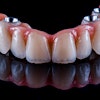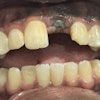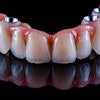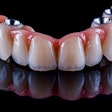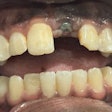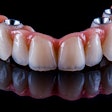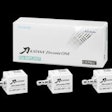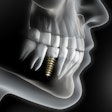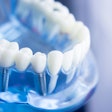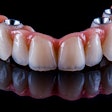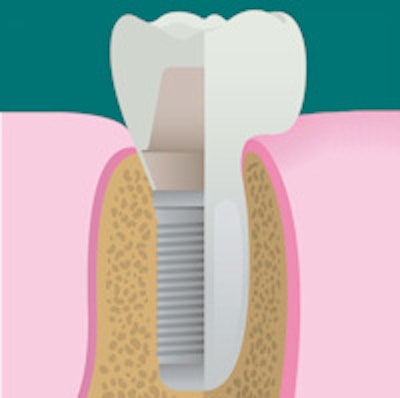
The introduction of dental implants has proved to be a pivotal technology in dentistry. In a profession that strives to help patients keep their dentition, the point when it becomes necessary to opt for dental implants is a judgment call. Now, a new critical review published in the Journal of Dental Research comparing the long-term survival of implants and teeth that have been treated endodontically can help clinicians gain perspective on the two options (January 2014, Vol. 93:1, pp. 19-26).
"Both options should be seen as complementing each other, not as competing, and should serve the overall goal in dentistry, the long-term health and benefit of the patient, being least invasive and incorporating function, comfort, and esthetics," the authors from the University of Pennsylvania wrote. "A tendency exists toward a simplified approach of 'extraction and implant,' but this is not always simple or ethical."
Retention vs. replace
The researchers sought to examine the issue of "retention versus replace," as well as endodontic therapy misconceptions, and analyze current endodontic treatment planning strategies for long-term success and tooth retention.
"Evidence exists that the loss rate of implants is higher than that of natural teeth in clinically well-maintained patients," they wrote.
Comparing the two treatments is inherently difficult: "The implant field lacks a singular definition of success," the authors noted, and many of the studies they examined opted instead to use "survival" as a study end point, giving them more opportunities for positive results.
"This is significant," the authors explained, "because a distinct difference exists between outcome rates obtained from success vs. survival analysis." In one study, the researchers found cumulative survival in 92% of 1,022 implants observed over a seven-year period, while cumulative success was only 83% (International Journal of Oral & Maxillofacial Implants [JOMI], September/October 2000, Vol. 15:5, pp. 691-700).
Another study from the same journal found similarly significant disparities in survival and success rates of implants, as shown in the chart below (JOMI, March/April 2004, Vol. 19:2, pp. 247-259).
| Disparities in survival vs. success rates in clinical studies | ||
| Implant type | Survival rate | Success rate |
| Single-tooth prosthesis support | 96% | 76% |
| Cantilever fixed-partial prosthesis | 94% | 76% |
| Fixed-partial prosthesis | 96% | 74% |
| Fixed complete prosthesis | 100% | 71% |
| Implant-/tooth-supported prosthesis | 91% | 71% |
| Overdentures | 96% | 79% |
In fact, some "ailing" or "failing" implants are categorized as successful in certain studies, the authors cautioned.
"Based on the critical evaluation of published data and methods used in clinical studies, reported outcome rates for implants may be greatly inflated," they wrote.
In addition, the researchers found a lack of funding disclosures in 63% of industry-sponsored implant trials, while 66% had a risk of bias. The authors warned against using a success or survival rate of more than 95% for implants as a promotional tool, and noted that applying that figure to the general population "is erroneous information, because these values stem from ideal situations."
Meanwhile, there are strict guidelines for endodontic success.
"If a positive outcome for teeth was defined as retention without symptoms, regardless of the periapical status, the survival of endodontically treated teeth is as high as that of implants," the authors explained. As an example, they cited a meta-analysis that found a survival rate of 95% in restored single-unit implants and 94% of endodontically treated teeth in a six-year period (JOMI, 2007, Vol. 22:suppl, pp. 96-116).
“Too many teeth are extracted in favor of implants.”
One study they cited used data provided by a health insurance carrier that followed more than 1.46 million teeth that had received primary endodontic treatment over an eight-year period (Journal of Endodontics [JOE], December 2004, Vol. 30:12, pp. 846-850). The authors noted high survival rates in the study: 97% of the teeth were retained and the endodontic treatment in place, while only 3% needed surgical or nonsurgical retreatment or had to be extracted.
The authors also compared the prognosis for implants and endodontically treated teeth, and noted that "natural teeth exceed the life expectancy of implants at 10-year observation points, including endodontically treated or periodontally compromised teeth."
In one study that compared endodontically treated teeth with single-unit implants, university researchers observed a positive outcome in 74% of the implants and 84% of the endodontically treated teeth after seven to nine years (JOE, July 14, 2006). They also found significantly higher rates of complications and necessary interventions in the implant group, and patients needed more time to adjust to implant restorations.
With implants, a significant number fail before osseointegration has taken place, while the greatest number of losses happen after the fixture has been placed but before the suprastructure is in place.
Treatment outcomes differ significantly, depending on the experience of the clinician, and it is more significant in implants than in endodontic treatment. In one study, implant specialists achieved a 96% survival rate, while inexperienced practitioners only had a survival rate of 73% (Annals of Periodontology, December 2000, Vol. 5:1, pp. 90-100, 129-136). Meanwhile, researchers observed less of a difference when it came to clinician type and endodontic treatment in a multicenter study with 350 teeth meeting the inclusion criteria: General practitioners had a 90% survival rate, while endodontic specialists had a 98% rate.
Endodontic treatment has improved significantly over the last 20 years. And in the minds of the authors of this review, "too many teeth are extracted in favor of implants, since extraction is perceived as easier and more lucrative than saving a natural tooth." Clinicians should remember that "teeth with moderate vertical bone loss, even with furcation involvement, have a good prognosis if proper treatment is rendered."
